Recently, Tam Anh General Hospital - Ho Chi Minh City saved the life and hand of Mr. TTN (56 years old, in Binh Dinh) who suffered from septic shock, complications of heart failure, acute kidney failure... Mr. N. had diabetes for the past 15 years, and was stung by an insect on his hand, leading to the above incident.
Had to amputate a limb because of negligence.
After being stung by an insect, Mr. N. thought it was a small matter so he just applied oil and bought medicine to take. However, after a week, the wound did not heal but became increasingly swollen, painful, blistered, and necrotic. Mr. N. was taken to the emergency room in a state of drowsiness, difficulty breathing, blood pressure dropped to 80/50 mgHg, fever of 38.5 degrees Celsius; the back of his hand and left forearm were red and swollen like a banana, ulcerated, oozing pus, and had black spots due to necrotic skin. Mr. N.'s blood sugar test results exceeded the threshold.
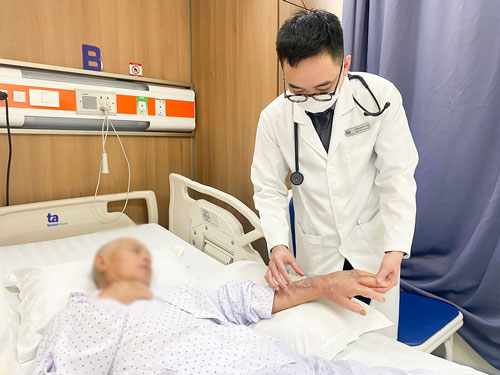
Diabetic patient was treated by doctors at Tam Anh General Hospital - Ho Chi Minh City, did not have to amputate his arm
Specialist II Doctor Le Hong Hai, Department of Emergency Medicine - Tam Anh General Hospital, said that as soon as he was admitted to the hospital, the patient was prescribed electrolyte replacement, insulin, emergency resuscitation to control infection, and vasopressors. After 13 days of intensive care, Mr. N.'s wound healed and his hand did not need to be amputated.
"The patient has passed the life-threatening stage and escaped from a serious infection. However, because he is in the recovery stage of kidney failure and acute heart failure, in addition to controlling blood sugar well, he also needs to adjust the dose of antibiotics and take regular care of the wound to optimize the treatment's effectiveness," said Dr. Hai.
At medical facilities nationwide, many people with severe diabetes infections are hospitalized to amputate limbs, cut off fingers, etc. quite often. Specialist II Doctor Vo Ngoc Cuong, Director of Binh Chanh District Hospital - Ho Chi Minh City, said that the hospital has just performed angioplasty to save the legs of 2 cases with severe complications after many years of diabetes. Notably, the 46-year-old man from Soc Trang has had diabetes for 13 years, has taken medication continuously but has not had a check-up, smokes and has had his legs amputated 3 times. The 62-year-old woman from Nghe An has had diabetes for 23 years, is on insulin treatment, has an infection in 1 toe, and treatment at the provincial hospital did not respond so it had to be amputated.
New technique to save the disabled
Experts say that most diabetics, especially those who do not control their blood sugar well, have a weakened immune system, making their bodies vulnerable to attacks from viruses and bacteria. Unstable blood sugar often increases the risk of atherosclerosis, limiting blood flow to the limbs (hands and feet). These are two reasons why people with diabetes often have foot ulcers. In addition, they are also susceptible to peripheral neuropathy, so they do not feel the damage if they are accidentally impacted by external forces, even small ones such as sharp objects, insect stings, stepping on thorns, etc., leading to improper wound care and difficult-to-heal infections.
According to Dr. Tran Doan Dao, Vice President of the Ho Chi Minh City Wound Treatment Association, many cases of people with diabetes only have a small scratch, which then develops into a severe ulcer, causing necrosis, leading to complications such as foot deformities, foot ulcers, calluses, and in many serious cases, amputation. Therefore, timely and proper medical care will help minimize the risk of limb amputation, reduce infection, reduce treatment time, limit pain and save costs.
In Ho Chi Minh City, there are currently many treatment regimens for severe infections and foot ulcers caused by diabetes complications. Recently, Bernard Healthcare has put into operation a specialized unit for treating ulcers and healing wounds for people with diabetes complications. Ms. Nguyen Nam Phuong, General Director of Bernard Healthcare, said that the center has invested in modern equipment such as: MRI, CT Scan, endoscopy, ultrasound with integrated artificial intelligence... to screen and treat chronic wounds, slow-healing ulcers, varicose veins, control diabetes complications...
At People's Hospital 115, high-tech methods are applied to treat foot ulcers such as: VAC (negative pressure wound suction technique), epithelial growth, and Nano-Oligo Saccharide gauze.
MSc. Vo Tuan Khoa, Department of Endocrinology, People's Hospital 115 (HCMC), emphasized the key points in preventing diabetic foot ulcers including: Doctors identify patients with feet at risk of ulcers. Regularly examine feet at risk of ulcers. Patients, relatives and primary health care workers need to be instructed on foot care. Patients should wear appropriate footwear. Should go to the doctor early when there are unusual signs in the feet.
According to Dr. Do Trong Anh, Director of Hospital 1A (Orthopedic and Rehabilitation of Ho Chi Minh City), the demand for treatment of diabetic foot wounds has increased in recent years. The hospital has established a specialized unit with 20 beds to help patients receive wound care using new techniques of debridement, treatment with modern bandages, monitoring wound healing, and consulting on recovery solutions after discharge from the hospital...
"The rich also cry"
Dr. Vo Tuan Khoa noted that wound care for people with diabetes is very important, especially on the feet. World statistics show that in 4 people with diabetes, 1 person will have a foot ulcer during their lifetime. The later the patient comes to the doctor, the more severe the diabetic foot ulcer will be. On average, a diabetic patient with a foot ulcer is hospitalized for 4 weeks. Of these, 10%-15% die during hospitalization, 85% of cases are at risk of having to amputate the leg.
"Diabetic foot ulcers can be said to make "the rich cry" if they get them, because the cost of treatment is a huge burden" - Dr. Khoa emphasized.
Source


![[Photo] Ho Chi Minh City holds funeral for former President Tran Duc Luong](https://vphoto.vietnam.vn/thumb/1200x675/vietnam/resource/IMAGE/2025/5/24/9c1858ebd3d04170b6cef2e6bcb2019e)




![[Photo] Party and State leaders visit former President Tran Duc Luong](https://vphoto.vietnam.vn/thumb/1200x675/vietnam/resource/IMAGE/2025/5/24/960db9b19102400e8df68d5a6caadcf6)
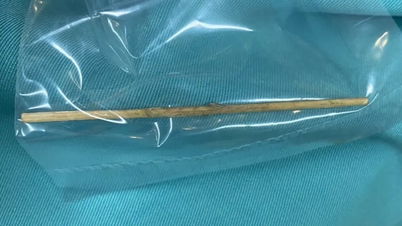



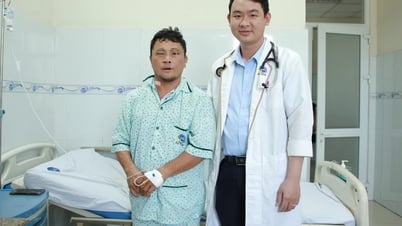


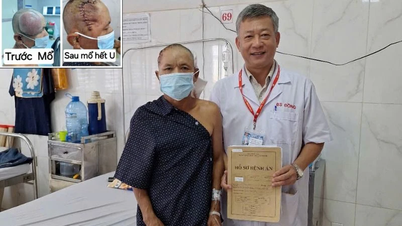

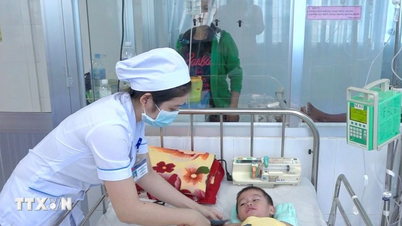














































































Comment (0)